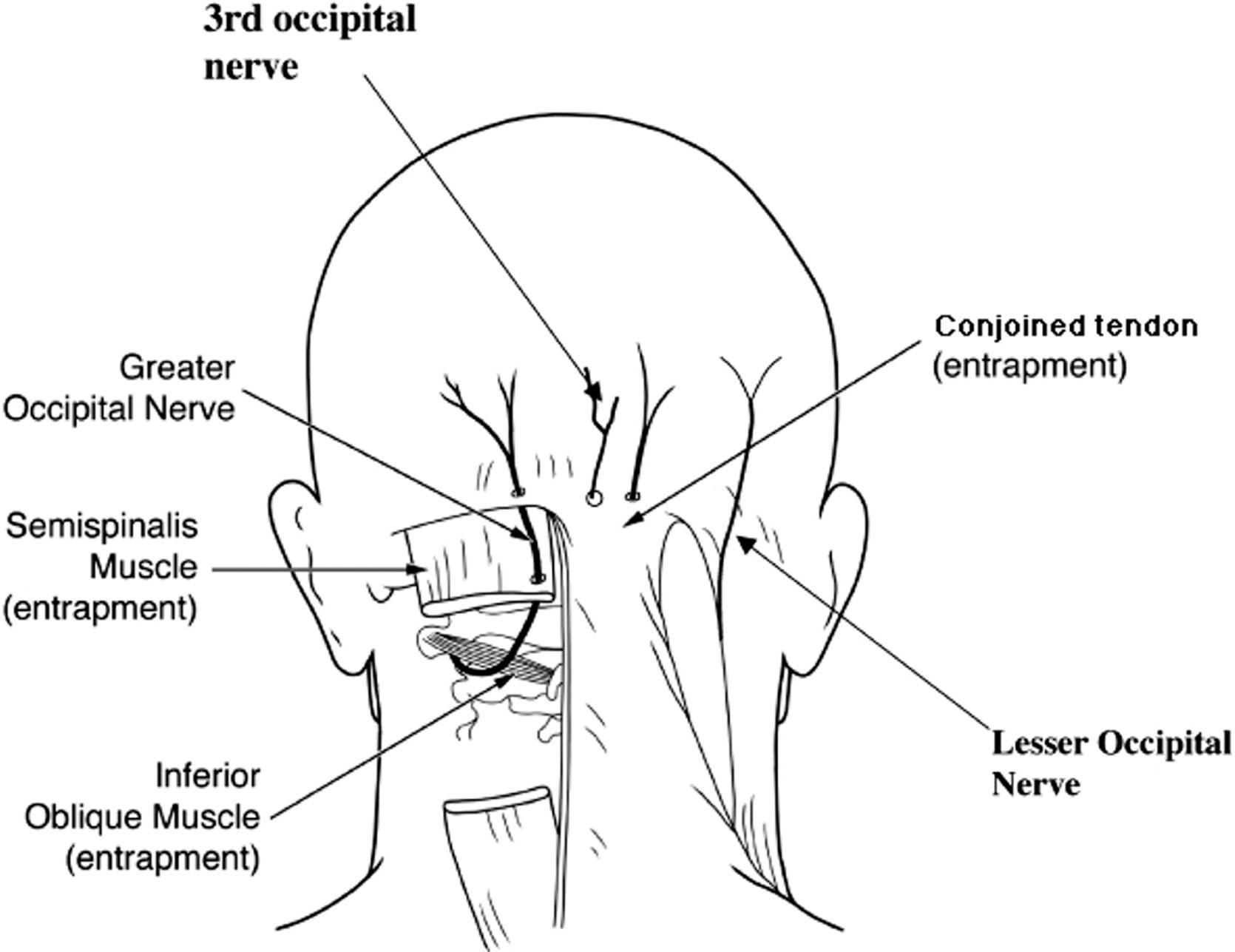Physical Address
304 North Cardinal St.
Dorchester Center, MA 02124
There are many poorly recognized or misrecognized peripheral nerve entrapments associated with clinical pain syndromes. Kopell and Thompson stated that peripheral nerve entrapments occur at anatomic sites where the nerve changes direction to enter a fibrous or fibroosseous tunnel, or where the nerve passes over a fibrous or muscular band, and that entrapment occurs at these sites because mechanically induced irritation is most likely to occur at these locations. Trauma, such as surgery or constriction, and peripheral swelling, such as seen perimenstrually or with dietary indiscretions, can induce or perpetuate these entrapments, causing direct injury to the nerve or compromising its blood flow (vasa neurorum).
Peripheral nerve entrapments can cause a variety of painful conditions as diverse as headache, backache, sciatica, endometriosis, and foot pain. In addition, painful conditions with well-described pathology such as chronic regional pain syndrome (CRPS) or postherpetic neuralgia (PHN) may have a component of nerve entrapment, either as the initiating event (e.g., CRPS) or as a consequence of the pathology (e,g., PHN).
Nerve entrapments may be present to varying degrees, leading to a variety of clinical presentations. The pain will often have a burning, shooting, or lancinating quality. Although initially the pain may be intermittent, the pain will usually become constant and more intense with time. If postsurgical, the pain can occur immediately after surgery, or it may start weeks to years after the surgery, as the scar cicatrix gradually tightens around the nerve. Pain is usually aggravated by activity, menstruation (due to perineural edema, hormone-induced increased neurotransmitters, and dorsal horn transmission cell sensitivity), or activity. Clinical diagnosis is dependent on a high index of suspicion and physical exam, but peripheral nerve injections that provide complete relief, albeit temporary, are the sine qua non for establishing this diagnosis.
Neuropathic pain originating from these nerves can have multiple etiologies. Nerve injury has been reported from:
Stretching
Blunt trauma
Compression with hypoxia
Fibrosis with entrapment
Suture ligature
Peripheral nerve injections are interventional pain management techniques used to diagnose and treat patients with nerve entrapments presenting as a variety of painful conditions. By delivering local anesthetic and deposteroid directly to the injured nerve, these injections can provide diagnostic as well as therapeutic benefit for patients suffering from pain from the head to the toes. Because entrapment of the nerve is usually the underlying pathology, care must be used to avoid further entrapment with large volumes of injectate. Treatment of nerve entrapments requires first the right diagnosis, which usually involves a diagnostic injection, using landmarks, ultrasound (US), or fluoroscopy. The injection of local anesthetic provides the anesthesia, as well as local disruption of the sympathetic stimulation; depot steroids are usually also injected to address the inflammation. If there is only temporary relief, hydrodissection (fluid injected around the nerve under US guidance to lyse the adhesions around the nerve) may be of use. Cryoneuroablation, which freezes the nerve but leaves the myelin sheath intact, is a nerve destruction technique that can be safely used on large, myelinated nerves. Peripheral nerve stimulation and surgical release may also offer relief.
Recognition of these conditions decrease the inappropriate use of expensive (and for these conditions useless) imaging and painful surgeries. Described in this chapter are a few of the most common nerve entrapment syndromes seen in busy outpatient pain clinics.
Peripheral nerve injections can be diagnostic and therapeutic for a wide variety of conditions, which include:
Headaches, including migraines
Atypical face pain
Chest wall pain
Shoulder and upper arm pain
Carpal tunnel syndrome and forearm pain
Abdominal wall pain
Pelvic pain
Low back syndrome
Sciatica
Foot pain
Peripheral neuropathy
Post herpetic neuralgia
CRPS
Local or systemic infection
Coagulopathy
Lack of consent
A direct injection into a peripheral nerve can cause permanent injury, especially if medication is injected intraneurally. The injection should be stopped and redirected if the patient experiences a paresthesia of any kind during the needle placement or injection.
Many of the clinical syndromes described below are not well recognized, and few rigorous studies have been performed.
While clinicians are likely to be familiar with entrapments such as carpal tunnel syndrome (CTS), many others, such as the ones below, may not be as familiar, leading to a lack of diagnosis and therefore lack of appropriate treatment.
Occipital nerve entrapment is one of the more common causes of headaches. These can be posttraumatic or chronic tension headaches, or can occur as postoperative pain after high cervical fusions. There are actually three occipital nerves (the greater, the lesser, and the third [ Fig. 2.1 ]) but we will focus on the greater occipital nerve (GON) in this chapter. The GON exits the C2 foramen, passes over the inferior oblique muscle, and then travels up the back of the head ( Fig. 2.1 ), where it joins with the occipital artery and vein as it passes through the fascial sling between the trapezius and splenius capitus muscles ( Fig. 2.2 ). Pain can refer to frontal or retroorbital regions, and treatment is usually at the distal site but may need to be treated proximally. US hydrodissection and cryoneuroablation are potential treatments. Occipital peripheral nerve stimulation (PNS) is probably one of the most common treatments; it was first described by Weiner in 2007 and is now fairly widely used.


Become a Clinical Tree membership for Full access and enjoy Unlimited articles
If you are a member. Log in here